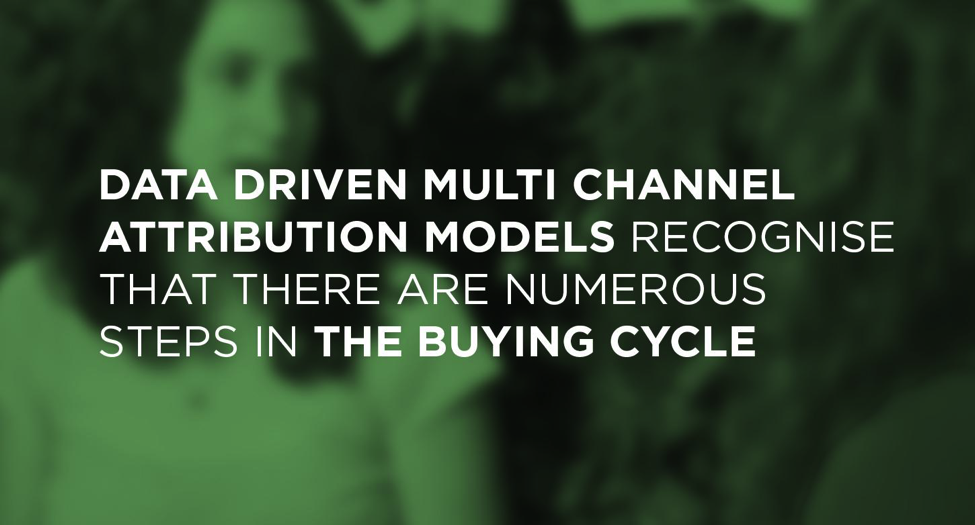Map the Customer Journey with Multi-Touch Attribution Modelling
Senior account manager Erica Sachse and campaign manager Caroline Hass of Social Garden talk the benefits of moving to multi-touch attribution to track and optimise the purchase journey.
Last click attribution is dead.
The pathway to purchase has unlimited digital touch points, so why should the last marketing touchpoint get all of the credit? It’s not the way consumers purchase anymore and shouldn’t be the way marketers attribute value. Enter MTA – multi-channel attribution.
I want to take you through the what, why and how we arrived at a multi touch attribution model, and the benefits of making the switch when it comes to mapping the buyer's journey, from the interest stage to putting down a deposit on a property.

Marketing Attribution Modelling - A Retrospective
in the Past
Traditionally, marketers preferred a single touch attribution model – either the last click or first click attribution model. This assigns all the value to a single touchpoint (you can guess which one) in impacting the purchase.
Marketing decisions were made based on cost-per-acquisition results for individual channels.
In the Present
Consumers spend more time online doing research and purchasing, while marketers are measuring more behaviours than ever before. A multi channel approach is bridging the gap between consumer behaviours and acquisition pathways.
In the Future
The future of attribution modelling is predicted to focus on measuring the value of each touchpoint – both online and offline – to paint an accurate picture of how your marketing channels improve sales.
MTA measures impact of one channel on another and value creation within a single channel.
Online vs. Offline Channels
Not only has there been a shift in the type of attribution model being used, but also what is being measured. Many marketers make the mistake of only measuring digital attributions, which can result in missing out on key micro-conversions that happen through offline interactions.
MTA accounts for offline and online factors like:
Offline channels: direct mail, radio, point of sale, television, and appointments.
Online channels: social media platforms (Facebook, Twitter, Youtube etc.)
So, What the Heck is Multi Touch Attribution?
Multi channel attribution modelling helps you determine, and build upon, the impact of touch-points in the top, middle and bottom of the marketing funnel (TOFU, MOFU & BOFU).
This is necessary to identify which marketing platforms are efficient drivers of business and leads. With this data, businesses can more effectively decide which areas are worthwhile in investing more time and money into.
For example, if a consumer sees an ad on Facebook on their phone and then later decides to visit the website of that product, companies using a last touch attribution model will miss the real value of the Facebook ad in their consumer’s buying journey.
Likewise, many marketers often experience similar situations with their consumers and can overlook marketing channels that actually play a key role in converting leads by adopting a first click attribution model. Cross device attribution is a key benefit of moving to a multi touch attribution model.

Data-driven multi channel attribution models recognise the numerous steps in the buying cycle and that each one provides value. New tools allow us to assign a monetary or engagement value to that touchpoint - and manipulate the buying pathway to make the sales engine roar.
Where Do We Go From Here?
“As a marketer, thinking of yourself as a consumer is the best place to start.”
Top 3 tips to get started with MTA:
Widen your arsenal of metrics you measure across your marketing & sales activity e.g. email opens and click throughs, view through conversions, event attendance, chatbot and Messenger logic trees. Review what you’re currently using against an ideal future state of activity.
Change the way you think about view-through conversions. This tool becomes particularly powerful within a 24 hour window – where formerly "fluffy, nebulus branding dollars" can be tied directly to a conversion and optimised accordingly.
Get started on the tools. Google Attribution 360, part of the Google Analytics 360 Suite is an enterprise solution for businesses who are already riding the Google train to connect Adwords, DoubleClick and custom offline events.
A multi channel approach isn’t the future, it’s happening now. This is the single best way to identify and descale underperforming marketing channels, supercharging the channel coordination strategy that works for your business and converts more property buyers.
Get started with our free Customer Journey Mapping Framework. You can use our guide to identify how you’re currently reaching and tracking your audience across their purchase journey.
The Urban Developer is proud to partner with Social Garden to deliver this article to you. In doing so, we can continue to publish our free daily news, information, insights and opinion to you, our valued readers.














